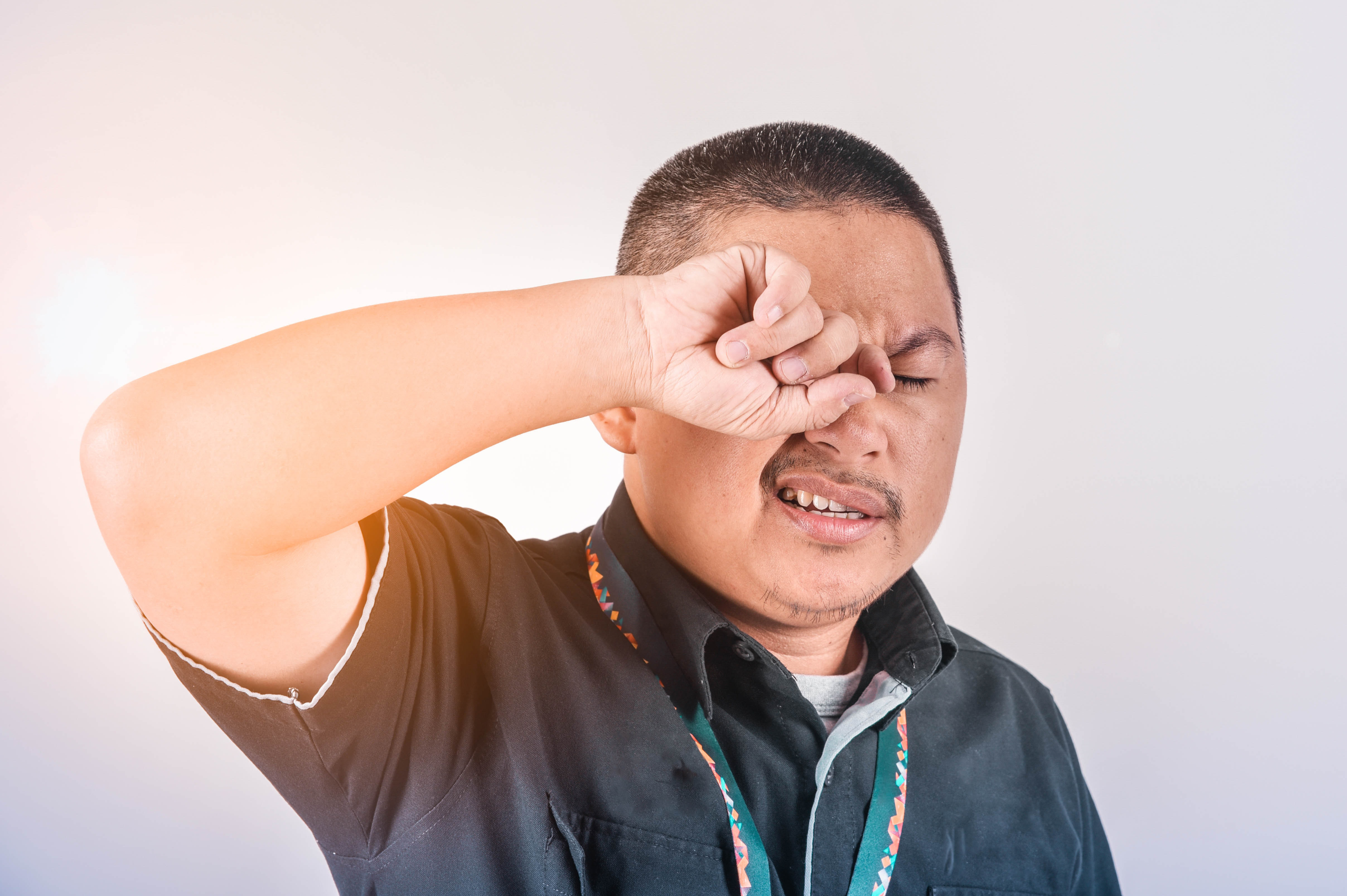 |
| Eyelid movements and maneuvers such as eye rubbing temporarily increase IOP, study shows. Photo: Ahmad Gunnaivi on Unsplash. |
It’s known that intraocular pressure (IOP) levels can vary throughout the day, but they may also change from one minute to the next. A recent study discovered that one factor that causes short-term IOP variation in glaucoma patients is eyelid movement. In fact, the team found that eyelid squeezing and rubbing can temporarily increase IOP by over 40mm Hg, voluntary blinks by 12mm Hg and eyelid closure by 4mm Hg.
Goldmann applanation tonometry has long remained the gold standard to measure IOP levels in glaucoma patients, though it’s unable to observe short-term fluctuations in ocular pressure. A relatively new alternative to in-office tonometry, the implantable telemetric IOP sensor, is a clinical tool that makes it possible to observe these temporary changes in IOP. Using a small cohort of 11 primary open-angle glaucoma patients who had this sensor previously implanted, a research team investigated the extent of which specific eyelid muscle actions impact a patient’s IOP.
As a baseline measurement, participants were asked to look straight ahead for one minute. Next, the team evaluated various eyelid movements and corresponding pressure level changes by instructing patients to do the following: six cycles of blinking with 10-second intervals in between and five cycles of eyelid closure, squeezing and rubbing with 15-second intervals in between. IOP levels were recorded from the sensor using an external antenna placed around the eye under examination.
The average peak in IOP increase following eyelid rubbing was 59.1mm Hg from baseline. For eyelid squeezing, the peak IOP increase was 42.2mm Hg; for eyelid closure, 3.8mm Hg; and for voluntary blinking, 11.6mm Hg. The researchers also noted that during involuntary blinking, no IOP changes were observed, but most patients experienced a momentary irregularity in ocular pulse.
The team concluded that although their study observed brief, substantial increases during eyelid squeezing and rubbing, and although eyelid rubbing-induced glaucoma has been suggested before, “It is currently unknown whether these IOP changes are clinically relevant.” More research is warranted to determine whether these brief IOP fluctuations during eyelid muscle movement contribute to glaucomatous damage.
van den Bosch JJON, Pennisi V, Mansouri K, et al. Effect of eyelid muscle action and rubbing on telemetrically obtained intraocular pressure in patients with glaucoma with an IOP sensor implant. Br J Ophthalmol. June 14, 2022. [Epub ahead of print]. |


